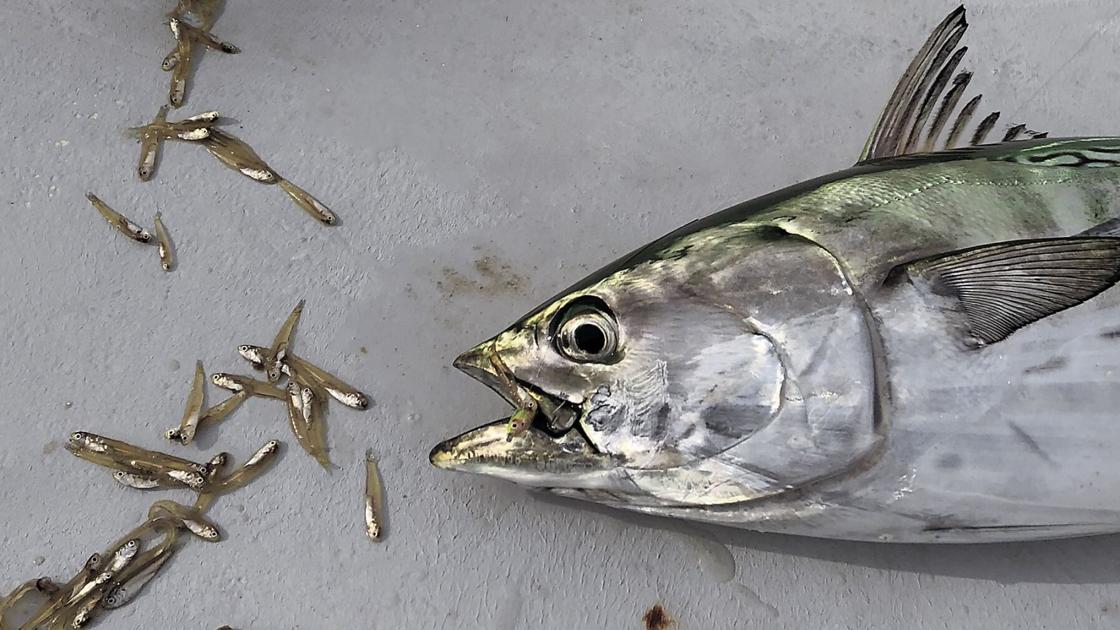
Think about your favorite fish to catch. Any species at all, from snook to tiger sharks. Now, what does that fish eat? I didn’t ask what you use for bait. I asked what it eats. When you think about it for a minute or two, you realize this is a much harder question than it first appears.
How do you know what a fish eats? If you were an ichthyologist, you’d go out and collect some specimens, then dissect them and study their stomach contents. Well, here’s something you may never have considered: As anglers, we are all ichthyologists. We all make a study of fish and their habits (some to a much greater degree than others).
And if we keep fish for the table, we are in fact dissecting them. This is where fishermen and fish scientists diverge, though. Fishermen generally discard the internal organs immediately, whereas fish scientists pore over them in great detail.
Now, I don’t expect you to become suddenly fascinated by fish guts, but I would recommend that you make a habit of cutting open the stomach to see what you can see. Sure, it’s kind of gross — but it is also highly educational, and the information learned is practical.
Many anglers put a lot of thought into what they’re going to use to tempt a fish to bite. After all, if you choose something that the fish don’t want to eat, you won’t be hooking much. You can have a whole ocean of fish surrounding you and still come up empty if you can’t convince a fish to eat.
But what information do we have to base those choices on? You can look at what other anglers are using. You can go by what they’re saying at the tackle shop. You can ask people on social media. You can try seeing what forage species are in the water. You can go with what you’ve had success on before.
All of these are useful — but none of them gets the information from the very best source, which is the fish themselves. A quick peek into a fish’s stomach provides you with insights that you simply cannot get elsewhere.
For example, I was wade fishing with a buddy of mine a few years back. (We’ll call him Tom, since that’s his name.) Tom was fishing with live shrimp, targeting redfish on the flats of the upper Harbor. But what he hooked was a large trout instead, about 22 inches. The fish took the bait deep and was bleeding heavily from the gills, so Tom decided to harvest it.
Back at the cleaning table, Tom decided he wanted to see what was in the trout’s stomach. (Tom’s smart like that.) What would you expect to find? A few shrimp, maybe, or a pinfish? How about an 11-inch ladyfish, because that’s what was in there.
Another time, Capt. Mike Myers and I went down to Pine Island Sound to scout for a redfish tournament. We ended up bringing home a couple of 25-inch fish for the table, both of which were caught on chunked ladyfish. The first fish had a belly full of dozens of tiny grass shrimp, none of which were more than an inch long. Interesting, but not too unusual.
The second fish was weirder. No shrimp, no crabs, no fish. Instead, there were the fractured pieces of several kinds of sea star and the broken bits of a sea urchin shell. The next time you watch reds rooting around on the bottom, don’t assume that they’re only digging up crabs.
Fish stomachs hold all sorts of fun surprises. Over the years, some the more memorable have included a grouper with several small octopus, a snook with a clawless stone crab about 5 inches across, a shark with the back half of a smaller shark, a mangrove snapper swollen to near-bursting with cut sardine pieces (quick tip — chumming is about the smell, not about feeding fish), and a channel catfish with a handful of rocks. I have yet to catch a mahi with baby sea turtles in it, but then again I don’t catch many mahi.
Sometimes you don’t find anything at all, or maybe just a bit of the brownish liquid called chyme, a soup of partially digested food, stomach acid and various enzymes. This is less informative, but it does tell you one thing: That was a hungry fish.
And sometimes, no cutting is necessary to see what a fish has been eating. The Spanish mackerel that are so abundant off the beaches right now are infamous for upchucking the little baitfish they’ve been eating as you bring them into the boat. Goliath grouper often do the same as they wallow boatside, waiting for you to take a picture and unhook them. That’s now we know that goliaths in the Boca Grande Pass area eat lots of blue crabs.
All of this is valuable data, but you’ll never gather any for yourself if you keep feeding unopened fish stomachs to the catfish and crabs. When I keep a fish, I always take the extra 20 seconds to learn what I can from it. Maybe you should too.
As the Fish Coach, Capt. Josh Olive offers personalized instruction on how and where to fish in Southwest Florida. Whether you’re a complete beginner or just looking to refine your techniques, he can help you get past the frustration and start catching more fish. Lessons can be held on your boat, on local piers or even in your backyard. To book your session or for more information, go to FishCoach.net, email Josh@FishCoach.net or call 941-276-9657.
"fish" - Google News
November 26, 2020 at 06:00AM
https://ift.tt/3o10lSD
What do fish eat? | Waterline - yoursun.com
"fish" - Google News
https://ift.tt/35JkYuc
https://ift.tt/3feFffJ
Bagikan Berita Ini














0 Response to "What do fish eat? | Waterline - yoursun.com"
Post a Comment